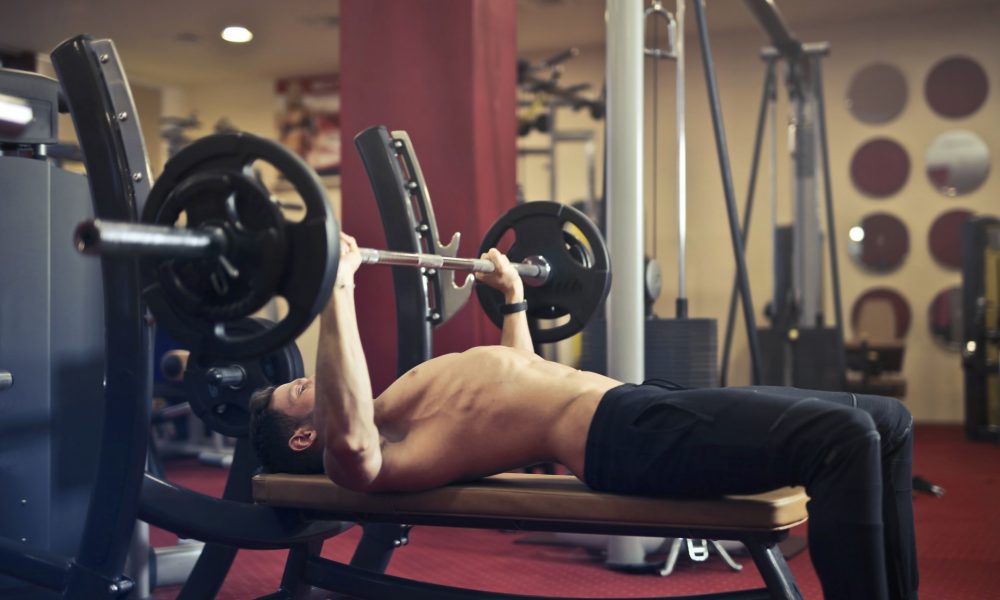
Done Dieting? How to Transition to Maintenance
So you’re done with dieting. Now it’s time to transition to maintenance because losing weight is only half the battle. Maintaining your new bodyweight is the other (arguably more important) half.

How many reps should you do to build muscle? Which rep ranges build the most muscle?
These are deeply common questions that don’t often get answered too well. Meathead bros have oversimplified that moderate rep ranges around 8-12 reps are the holy grail for muscle growth. Their logic is that their favorite bodybuilder used this rep range, so it must be the best right?
I like to take a more objective approach to find the truth instead of listening to guys who’ve injected a few needles up their rear end. To do this, I’m going to analyze the science behind rep ranges and find practical recommendations which you can apply to your training today.
Some of this will sound nerdy, but I promise you’ll leave smarter.
Anyways, to break this all down, I’ll be defining low rep ranges as 1-7, moderate as 8-12, and high as 13+.
The lower rep ranges will inherently be heavier in load and higher rep ranges will be lighter to obviously match for relative intensity.
There are some obvious benefits to certain rep ranges. I’ll make this section short and sweet because these obvious benefits aren’t muscle growth and I know that’s what you really care about.
The first obvious benefit is in the lower rep ranges. Training in the lower rep ranges gets you stronger than higher rep ranges (1). This is predictable as using heavier loads will get you better at lifting heavier things. Powerlifters often train in this rep range because they’re purely focused on getting stronger not necessarily improving endurance or getting jacked.
On the contrary, training in the higher rep ranges is clearly better at improving muscular endurance (2). Again pretty obvious because if you lift a light load and do a ton of reps, you’re going to build muscular endurance from increasing work capacity. This is why CrossFit athletes do very high rep sets. Their sport requires muscles to endure long periods of performance.
Here’s where things get more complicated and extremely misunderstood. If low reps are better for strength and high reps are better for endurance, then moderate reps must be the hypertrophy rep range right?
Well not quite. Research has not only shown all rep ranges can build muscle, but that all rep ranges end up building the same muscle (6,7,8,12,37). The exception is extremely high rep ranges using less 30% 1-RM as the force requirements are too low and central fatigue is too high (13,14).
But, long story short, the moderate rep range is not necessarily exclusive or superior for muscle growth.
This might be hard to grasp after hearing all the old school bodybuilders worship the 8-12 rep range for years, but once you understand how sets build muscle, you’ll see understand all rep ranges can be viable muscle builders.
Your muscles grow when sufficient mechanical tension is placed on them, signaling for muscle growth to occur.
For a rep to place sufficient mechanical tension and trigger optimal hypertrophy, here’s what it needs:
If you’re a bit lost with the sciency terms, don’t worry. I’ll break it down for you.
Let’s start with the first component which is a high level of motor unit recruitment.
A motor unit is basically a motor neuron that controls muscle fibers. To grow a muscle fiber, it must be activated by a motor unit.
Low threshold motor units tend to control type 1 muscle fibers which don’t have much growth potential. Trying to get big by growing just type 1 fibers is like trying to build a mansion using just Legos. It’s just not effective.
That’s where type 2 muscle fibers come in. These muscle fibers are bigger, badder, and have far more potential to grow (3). High threshold motor units control type 2 fibers along with accessing more total muscle fibers (15). Therefore, one of the keys to triggering robust hypertrophy is recruiting as many high threshold motor units as possible.
Motor units are recruited in the order of size with the low or small motor units being recruited first, then high threshold motor units later depending on the effort needed (4).
When you lift a light or moderate weight, small motor units are first recruited to perform the task. As you start to fatigue and the low motor units produce less force or dropout, your body then recruits higher threshold motor units to pick up the slack allowing you to continue performing the task required.
On the other hand, when more force is required immediately, your body will recruit more motor units sooner including high threshold motor units. So if you lift a really heavy weight like your 3-rep max, all motor units are recruited on the first rep in order to complete the high demanding task.
Remember recruiting the muscle fibers is only one part of the equation. The fibers have to experience sufficient tension from a slow contraction velocity.
For low rep training, this is easy because your muscles already contract slowly thanks to the weight being really heavy.
The issue with low reps is that if the reps are too low, there isn’t as much tension to get optimal hypertrophy per set (10,11). So low rep sets are still viable muscle builders, but if they’re too low (1-4 reps), they’re suboptimal.
For higher rep training with moderate/light loads, getting sufficient time under tension is easy because your sets involve many reps. The issue here is that the weight is too light to achieve a naturally slow muscle contraction, therefore you must take the set near failure where fatigue naturally slows down your tempo.
I emphasize the word naturally because you will not get optimal hypertrophy by deliberately slowing down your concentric lifting speed. By deliberately slowing down, you are compromising force production.

This means to reap optimal hypertrophy with higher rep training, you have to lift the concentric with maximal intent and let fatigue gradually slow you down. Your final reps of a high rep set should be similarly as slow as the only reps in a low rep set (17,18).
This allows for maximum force output and sufficient tension to be placed on the most recruited muscle fibers which causes the glorious process of hypertrophy.
On a side note, these requirements also explain why power exercises like jumping and sprinting aren’t good muscle builders (16). They recruit a lot of motor units and have enough time under tension if you do enough of them, but they lack the naturally slow contraction velocity necessary for force production translating to muscle growth (5).
So here’s what you’ve learned so far. The sets that trigger significant hypertrophy are ones that reach high levels of motor unit recruitment and places sufficient tension on the muscles recruited by having a naturally slow contraction velocity (5).
This is why when you match for effort (proximity to failure), all rep ranges end up with the same hypertrophy assuming the reps aren’t extremely low or high (9).
No need to limit yourself to only the 8-12 rep range. Based on the data we have, the optimal hypertrophy rep range is about 5-30. Potentially, you could even go higher for exercises with a short range of motion.
The best general recommendation is to train in a variety of rep range over time as research shows there might be slight benefits to doing so (19,20,40).
That being said, there’s more to this story of rep ranges. While all rep ranges essentially build muscle equally, they have other aspects that are not equal.
You’ll also have to consider the following when making a program:
Figuring this out ultimately comes down to experimenting and seeing which rep ranges you respond best to.
H;, Kubo K;Ikebukuro T;Yata. “Effects of 4, 8, and 12 Repetition Maximum Resistance Training Protocols on Muscle Volume and Strength.” Journal of Strength and Conditioning Research, U.S. National Library of Medicine, pubmed.ncbi.nlm.nih.gov/32304514/.
“Lighter-Load Exercise Produces Greater Acute- and Prolonged-Fatigue in Exercised and Non-Exercised Limbs.” Taylor & Francis, www.tandfonline.com/doi/full/10.1080/02701367.2020.1734521.
Campos GE;Luecke TJ;Wendeln HK;Toma K;Hagerman FC;Murray TF;Ragg KE;Ratamess NA;Kraemer WJ;Staron RS; “Muscular Adaptations in Response to Three Different Resistance-Training Regimens: Specificity of Repetition Maximum Training Zones.” European Journal of Applied Physiology, U.S. National Library of Medicine, pubmed.ncbi.nlm.nih.gov/12436270/.
Grab my free Stupid Simple Scroll to Mastering Hypertrophy

So you’re done with dieting. Now it’s time to transition to maintenance because losing weight is only half the battle. Maintaining your new bodyweight is the other (arguably more important) half.

What if I told you about a strength training technique that pops your veins out, gets your arteries choked, and imposes a burning sensation hotter than Katy Perry wearing a sundress squeezing you on a summer’s day?

How Many Meals is Best For Fat Loss? For weight loss, It’s deeply common advice to eat 6 small meals a day. All the meathead